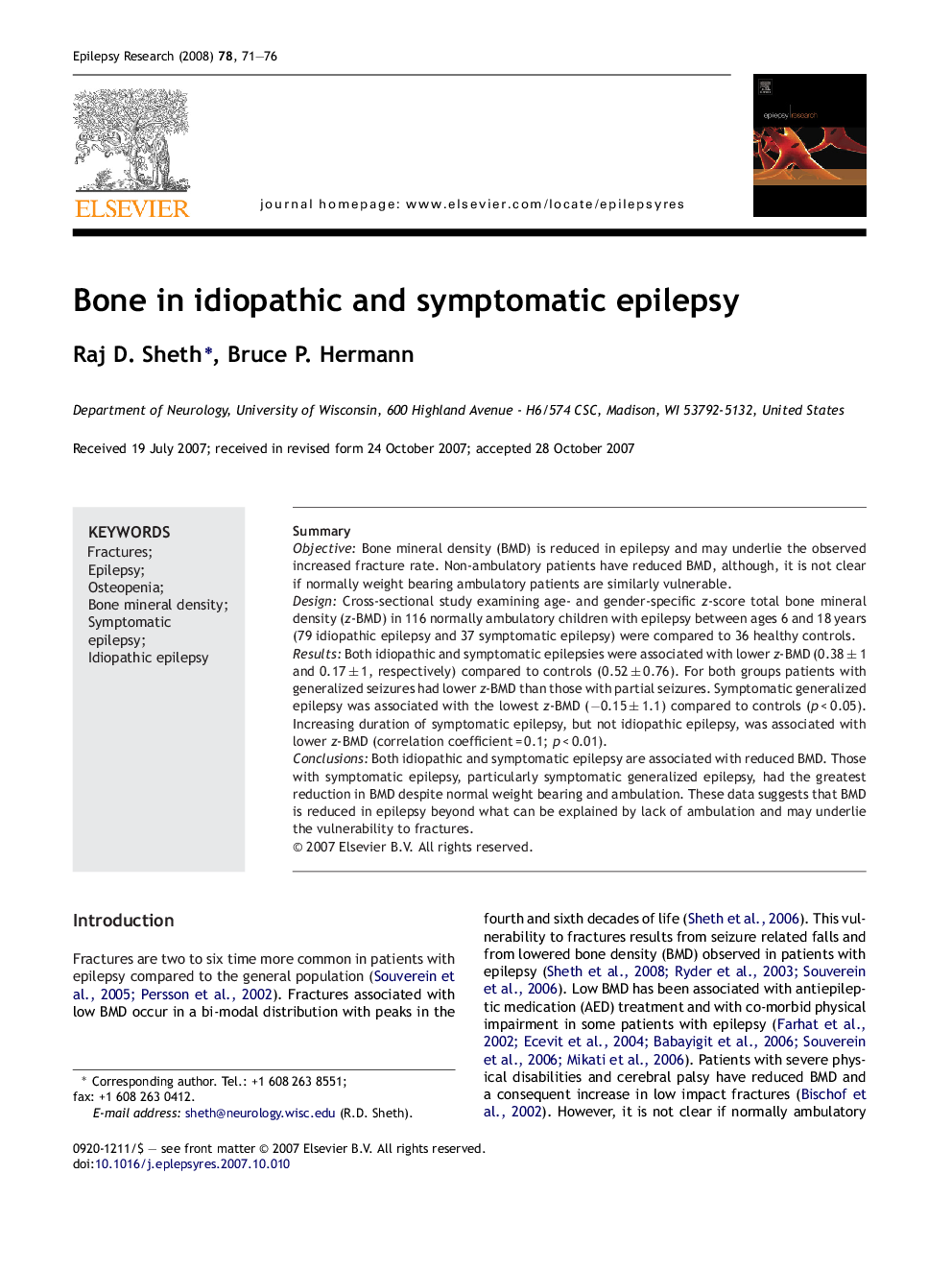| Article ID | Journal | Published Year | Pages | File Type |
|---|---|---|---|---|
| 3053100 | Epilepsy Research | 2008 | 6 Pages |
SummaryObjectiveBone mineral density (BMD) is reduced in epilepsy and may underlie the observed increased fracture rate. Non-ambulatory patients have reduced BMD, although, it is not clear if normally weight bearing ambulatory patients are similarly vulnerable.DesignCross-sectional study examining age- and gender-specific z-score total bone mineral density (z-BMD) in 116 normally ambulatory children with epilepsy between ages 6 and 18 years (79 idiopathic epilepsy and 37 symptomatic epilepsy) were compared to 36 healthy controls.ResultsBoth idiopathic and symptomatic epilepsies were associated with lower z-BMD (0.38 ± 1 and 0.17 ± 1, respectively) compared to controls (0.52 ± 0.76). For both groups patients with generalized seizures had lower z-BMD than those with partial seizures. Symptomatic generalized epilepsy was associated with the lowest z-BMD (−0.15 ± 1.1) compared to controls (p < 0.05). Increasing duration of symptomatic epilepsy, but not idiopathic epilepsy, was associated with lower z-BMD (correlation coefficient = 0.1; p < 0.01).ConclusionsBoth idiopathic and symptomatic epilepsy are associated with reduced BMD. Those with symptomatic epilepsy, particularly symptomatic generalized epilepsy, had the greatest reduction in BMD despite normal weight bearing and ambulation. These data suggests that BMD is reduced in epilepsy beyond what can be explained by lack of ambulation and may underlie the vulnerability to fractures.
